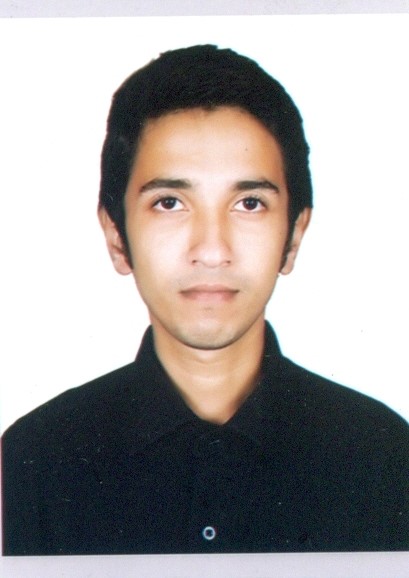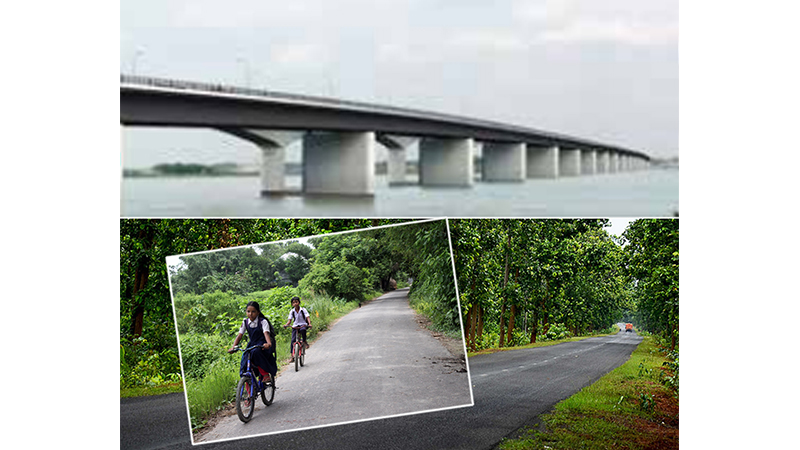Bangladesh changing from inside

Driven by resilient growth in gross domestic product, underpinned by strong domestic demand and policy reforms, the economic outlook of Bangladesh is changing at a rapid pace. Keeping pace with the sustaining economic development achieved over the past decade or so, remarkable progress has been made in almost every other socio-cultural indicator.
According to various local and international think-tanks, Bangladesh is now not only one of the fastest growing economies in the world but also a role model in alleviating poverty, building human capital and ensuring social justice by reducing disparities among various cohorts.
Experts attribute this continuing change in the country’s socio-economic and cultural fabrics to a series of development programmes undertaken and implemented by the ruling Awami League during its three successive tenures in the government.
Remarkable improvement has taken place in the people’s lifestyle across the country because of the massive development works done especially in sectors like education, health, transportation, communication, land, information technology and agriculture after the Prime Minister Sheikh Hasina-led Awami League government took office in 2009.
The government, since assuming power, has been working hard to improve the living condition of the citizens and improving rural economy has been at the focal point of the present government’s development strategy. As a result, revolutionary changes have already been brought about in the lives and livelihoods of rural people, making the rural economy more vibrant than ever before.
In a bid to make the development sustainable and inclusive, the government now embarked on a fresh programme styled ‘My Village My Town’ to take all modern civic amenities at the doorstep of the rural people. Besides, measures have been taken to increase the size and area of the ongoing development programmes.
The 'Ekti Bari Ekti Khamar' programme, which is a brainchild of Prime Minister Sheikh Hasina, has done wonder in empowering the rural poor.
The number of 'samities', formed under the project is 98,920 and member families are 43 lakh 75 thousand 9 hundred 69. The samities have own deposit of Tk 1,600 crore 37 lakh 50 thousand having a total fund of Tk 5,455 crore 90 lakh 90 thousand. The samities have so far disbursed credits amounting to Tk 6,049 core 69 lakh 90 thousand and recovery from credit amount is Tk 2,750 crore 94 lakh 85 thousand.
Under the project, a bank named 'Palli Sanchaya Bank’ has been established.
The bank has disbursed credit of Tk 5,402 crore 42 lakh 29 thousand 956 till March 31 and recovered amount is Tk 3396 crore 65 lakh 9 thousand 847. The bank also has disbursed SME loans to the tune of Tk 134.16 crore among 26,796 clients and recovered Tk 28.26 crore.
The government has now renamed the ‘Ekti Bari Ekti Khamar’ scheme to ‘Amar Bari Amar Khamar’ to increase the number of beneficiaries.
On the other hand, massive works of the Local Government and Engineering Department (LGED) have enormously developed the rural road transport network to improve accessibility to Growth Centers (GC), important social and administrative points and also development of GCs to expand marketing facilities of farm and non-farm products of the rural areas.
GCs are economically important markets which play role as economic nucleus of a particular rural area. There are 2,100 GCs and 18,000 small markets across the country. Meanwhile, the innovative idea of establishing community clinic by Prime Minister Sheikh Hasina has brought about a transformative change, experts opine.
So far, a vast majority of rural people have already visited 13,816 community clinics at their respective unions with various health problems. The government has a plan to open more 1,029 community clinics soon at the unserved unions. Currently, one Community Health Care Provider (CHCP) is engaged at each clinic.
Encouraging people to actively participate in their own health care the community clinics have now become an integral part in the life of the poorer section of people across the country. Around 80 percent women and children of rural areas are now blessed with health service facilities from the community clinics.
Local populations, particularly those who have or are at risk of the poorest health and have the greatest economic and social needs are presently heaving sign of relief as community health clinics are being operated across the country. Meanwhile, enormous developments in readymade garment (RMG), roads and highways, financial, industries, power, and diplomatic relationship with foreign countries have also changed the people’s lifestyle.
Apart from increasing the numbers of primary and secondary schools, higher secondary schools and colleges, and public universities, the government has also been setting up science and technology university in every district of the country. As a result meritorious students in the country’s remote areas are getting opportunity to get technology-based higher education.
Bangladesh’s economy has averaged above 6 percent annual growth for nearly a decade, reaching 8.13 percent in the running fiscal. After doing exceedingly well in achieving millennium development goal (MDGs) by 2015, Bangladesh is moving fast towards achieving the sustainable development goals (SDGs) by 2030.
Aided by a fast-growing manufacturing sector — Bangladesh’s garment industry is second only to China’s, which is playing a pivotal part in the country’s increasing export earnings and improving the overall health of the national economy. According to the Export Promotion Bureau (EPB), the total export income of the country was $15.5 billion dollar in 2008-09, where $12 billion contribution was the RMG sector. In 2017-18 fiscal year, Bangladesh has exported $30 billion dollar in the RMG sector, registering a two-time increase in the span of 10 years.
Sources with the commerce ministry said that new export item has been added in export sector day by day. Medicine, paper, cement and software industries along with RMG sector is play vital role in exporting goods. Earlier the last year, Bangladesh met the United Nations criteria for graduating from ‘least developed country (LDC)’ status by 2024. To Prime Minister Sheikh Hasina, the elevation to ‘developing economy’ means a significant boost to the nation’s self-image.
In the next five years, Bangladesh expects its annual GDP growth to exceed the 9 percent mark and 10 percent by 2021. PM Sheikh Hasina launched a ‘Digital Bangladesh’ strategy in 2009 backed by generous incentives. Now Dhaka, the nation’s capital, is home to a small but growing technology sector.
The government is now implementing an ambitious scheme to build a network of 100 special economic zones around the country, 11 of which have been completed while 79 are under construction. Chinese investors also bought 25 percent of the Dhaka Stock Exchange in 2018, and Bangladesh is now the second-largest importer of Chinese military hardware after Pakistan.
Experts said small industries have turned to big industries in the country. There are at least 20 groups of industries at present, which can easily invest Tk 10-25 thousand crore in any project. At least 100 top businessmen are changing the scenario of businesses.



